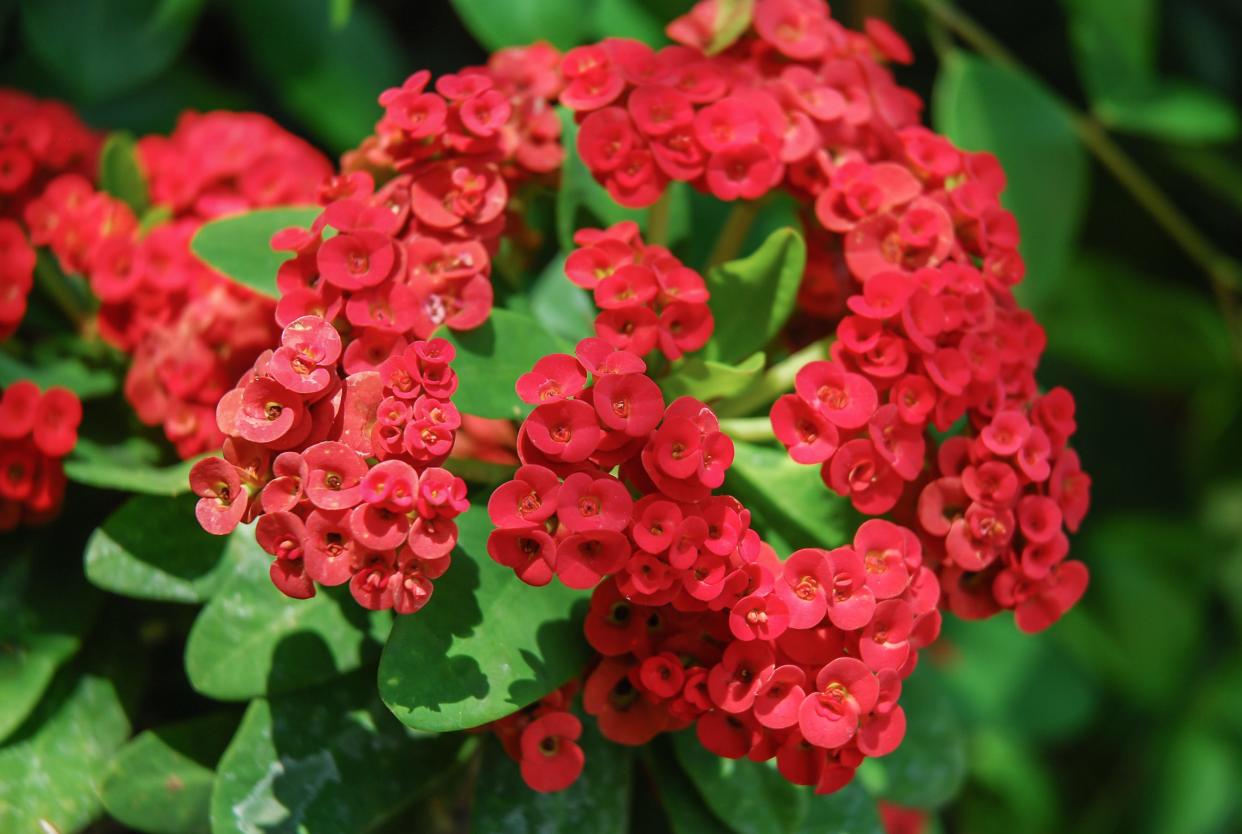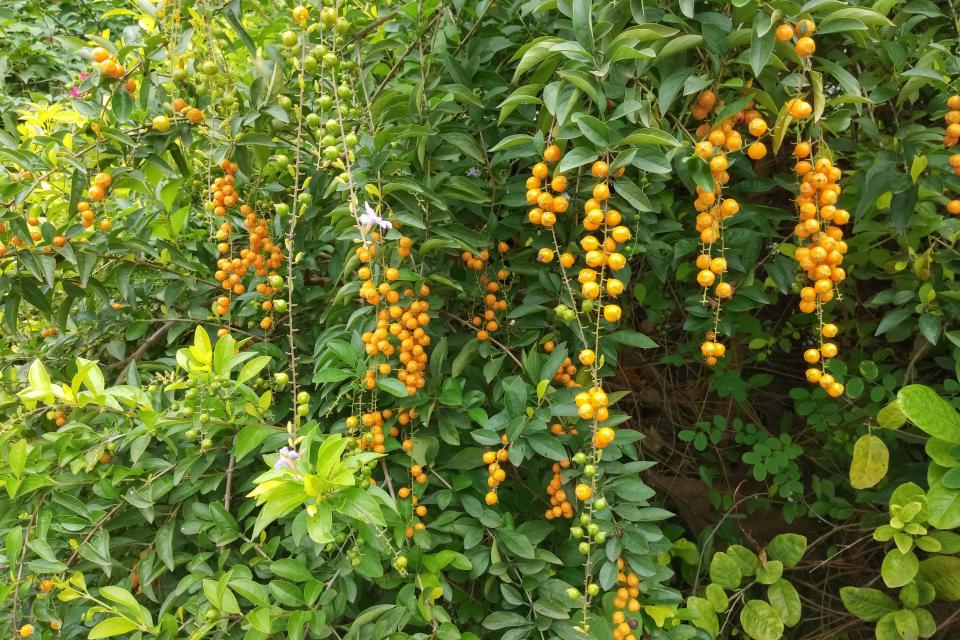For a splash of color, you can't go wrong with the many varieties of crown of thorns

The crown of thorns plant, named for the wreath of spines Christ was forced to wear during his crucifixion, has come a long way in a few decades.
We’ve gone from a single red-flowered species (Euphorbia milii) available in the 1970s to what seems like innumerable hybrids currently on the market. Blossom colors now include shades of red, pink and yellow, in addition to white and bicolored kinds.
Actually – as is the case with most Euphorbias – bright bracts that surround tiny flowers provide the vibrant hues gardeners appreciate. Incidentally, regarding the popularity of hybrids, a dwarf variety of the species called Minibell is still widely available. Just 6 to 10 inches tall, this tiny but versatile plant often covers itself with flowers.
Peanut butter plant Imagine a fruit that tastes like peanut butter dipped in honey
A bald statement When it comes to deciduous trees, bald is beautiful
Got a thing for magnolias? These three Asian varieties are perfect for Central Florida
Whether Minibells or certain hybrids – which can grow five feet tall – these spiny plants from Madagascar thrive on well-drained sites in bright light. Some hybrids, as well as Minibell plants, do well in partial shade, while others require full sun.
Not surprisingly because of the large number of hybrids, cold tolerance also varies, though most are suitable for our climate. In addition, many also do well indoors in bright windows. The milky sap of crown of thorns plants can be irritating, so wear gloves when pruning or taking cuttings for propagation.
Your garden needs a Sapphire Showers shrub
Sapphire showers is an ultra-lovely variety of golden dewdrop (Duranta erecta), a large violet-flowered shrub native from Mexico to South America and the West Indies.
Up to 20 feet tall and wide, sapphire showers displays darker, almost purple blossoms edged in white much of the year, along with attractive yellow fruit. Plants grow well on sandy sites, though young specimens aren’t nearly as drought tolerant as well-established shrubs, so mulching is recommended.
This shrub does okay in part-day sun, but full sun is best for dense growth and heavy flowering. Propagation of sapphire showers must be done via cuttings: seed-grown plants will resemble the species. Some horticulturists consider golden dewdrop to be a native, while others insist it was introduced to the Keys by early settlers.
Good for birds but not for people
Most people wrongly assume that fruits eaten by birds are safe for humans to consume.
In fact, plants many of us have in our gardens bear bird-friendly fruit that can sicken people and pets. Night-blooming jessamine, for example, features white, juicy-looking fruit that are harmless to bird life but can make children very ill. Even more popular are golden dewdrop and its varieties. These handsome shrubs flaunt large clusters of yellow fruit that attract birds but are toxic to people.

An attractive weed that some gardeners – including me – welcome when it volunteers in a suitable setting is poke weed, a large, fleshy-stemmed plant with eye-catching purple fruit. But all parts are poisonous, especially the berry-like fruit that tempt unknowing folks to pick them.
This article originally appeared on The Ledger: Once limited, options abound with colorful crown of thorns plants

